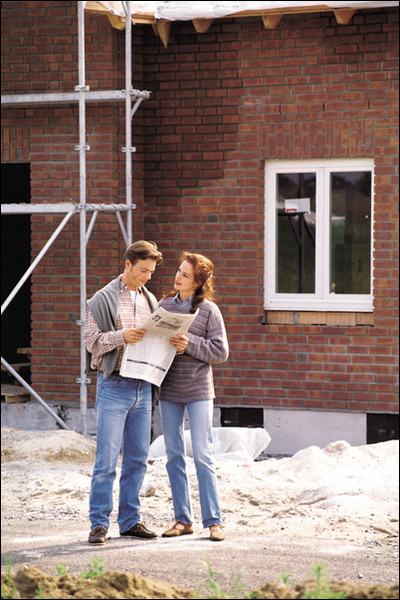There’s a movement afoot in home building that I find very interesting—the move to create survivable housing. Up to now, that term has been used to talk about homes that can stand up to wildfires and high-wind events. Now the notion of survivability is starting to focus on the ability of a home or shelter to remain livable after a major event such as a natural or manmade disaster. What does one do when a major Nor’easter closes roads and knocks out services? What if an earthquake buckles local roads, knocks out power, and boxes you in? A survivable home will plan for disaster by maintaining its temperature, air supply, fresh water, and power. It will be built of materials that are thermally stable, like concrete or insulated block, so that they can maintain their conditioned air temperature longer. They will feature energy storage systems to stockpile power that can be used when the lights go out. They will have backup generators and water storage tanks. The hope is for this idea to spread to municipal facilities as well so that local shelters will be prepared and equipped to continue functioning when disaster strikes. Sounds like a very smart approach to home building—and one that can be incorporated one step at a time. We’ll keep you posted.
Categories
- Blog
- Accessibility
- Appliances
- Architecture
- Attic
- Basement, Foundation & Crawlspace
- Bathroom
- Bedroom
- Blog – Season 01
- Blog – Season 02
- Buying
- Cabinetry
- Carpentry
- Charity
- Cleaning
- Closets & Storage
- Codes & Legislation
- Contest
- Deck, Porch & Patio
- Decor
- Demolition
- Doors
- Driveway & Walkway
- Electrical
- Energy Efficiency
- Entertainment Room
- Entryway
- Events
- Exterior Features & Spaces
- Fitness & Recreation Room
- Floors
- Garage
- Green Building
- Hardware Tools
- Healthy Home
- Hiring a Pro
- Home Design
- Home Lighting
- Home Office
- How To
- HVAC
- Innovative Technology
- Inspecting
- Kitchen
- Laundry
- Lawn & Garden
- Living Spaces
- Masonry & Paving
- Paint & Wallpaper
- Pest Control
- Plumbing
- Real Estate
- Recycling
- Renewable Energy – Solar Biomass Wind
- Repairing
- Restoring
- Roofing
- Safety
- Seasonal
- Security
- Sheds & Outbuildings
- Siding
- Special Features
- Stairs
- Thomas J. MacDonald
- TV Show Tours
- Walls & Ceilings
- Weatherizing
- Windows
- Woodworking Industry
- Workshop
- Gallery
- Appliances
- Bathroom
- Cabinetry
- Closets & Storage
- Deck, Porch & Patio
- Electrical
- Energy Efficiency
- Exterior Features & Spaces
- Fitness & Recreation Room
- Floors
- Garage
- Green Building|Gallery
- Home Design
- Home Lighting
- HVAC
- Innovative Technology
- Kitchen
- Lawn & Garden
- Masonry & Paving
- Plumbing
- Real Estate
- Roofing
- Safety
- Seasonal
- Sheds & Outbuildings
- Siding
- Sunroom
- Travel Events Gallery
- Home Improvement
- HowTo
- 101
- Accessibility
- Appliances
- Architecture
- Basement, Foundation & Crawlspace
- Bathroom
- Bedroom
- Cabinetry
- Carpentry
- Cleaning
- Closets & Storage
- Deck, Porch & Patio
- Decor
- Demolition
- Doors
- Driveway & Walkway
- Electrical
- Energy Efficiency
- Entryway
- Fitness & Recreation Room
- Floors
- Framing
- Garage
- Green Building
- Hardware Tools
- Healthy Home
- Hiring a Pro
- Home Design
- Home Lighting
- HVAC
- Innovative Technology
- Inspecting
- Kitchen
- Lawn & Garden
- Living Spaces
- Masonry & Paving
- Paint & Wallpaper
- Pest Control
- Plumbing
- Real Estate
- Renewable Energy – Solar Biomass Wind
- Repairing
- Restoring
- Roofing
- Safety
- Seasonal
- Security
- Sheds & Outbuildings
- Siding
- Special Features
- Stairs
- Step-by-Step
- Sunroom
- Walls & Ceilings
- Weatherizing
- Windows
- Projects
- Step By Step
- Appliances
- Bathroom
- Cabinetry
- Carpentry
- Cleaning
- Closets & Storage
- Deck, Porch & Patio
- Doors
- Driveway & Walkway
- Electrical
- Energy Efficiency
- Floors
- Garage
- Hardware Tools
- Home Lighting
- HVAC
- Lawn & Garden
- Masonry & Paving
- Paint & Wallpaper
- Plumbing
- Roofing
- Safety
- Seasonal
- Siding
- Walls & Ceilings
- Weatherizing
- Windows
- Workshop
- Tips
- Accessibility
- Appliances
- Attic
- Basement, Foundation & Crawlspace
- Bathroom
- Bedroom
- Buying
- Cabinetry
- Carpentry
- Cleaning
- Closets & Storage
- Deck, Porch & Patio
- Decor
- Demolition
- Doors
- Driveway & Walkway
- Electrical
- Energy Efficiency
- Entertainment Room
- Exterior Features & Spaces
- Floors
- Framing
- Garage
- Hardware Tools
- Hiring a Pro
- Home Design
- Home Lighting
- Home Office
- HVAC
- Kitchen
- Lawn & Garden
- Living Spaces
- Masonry & Paving
- Paint & Wallpaper
- Pest Control
- Plumbing
- Real Estate
- Recycling
- Roofing
- Safety
- Seasonal
- Sheds & Outbuildings
- Siding
- Special Features
- Walls & Ceilings
- Weatherizing
- Windows
- Workshop
- Videos




























